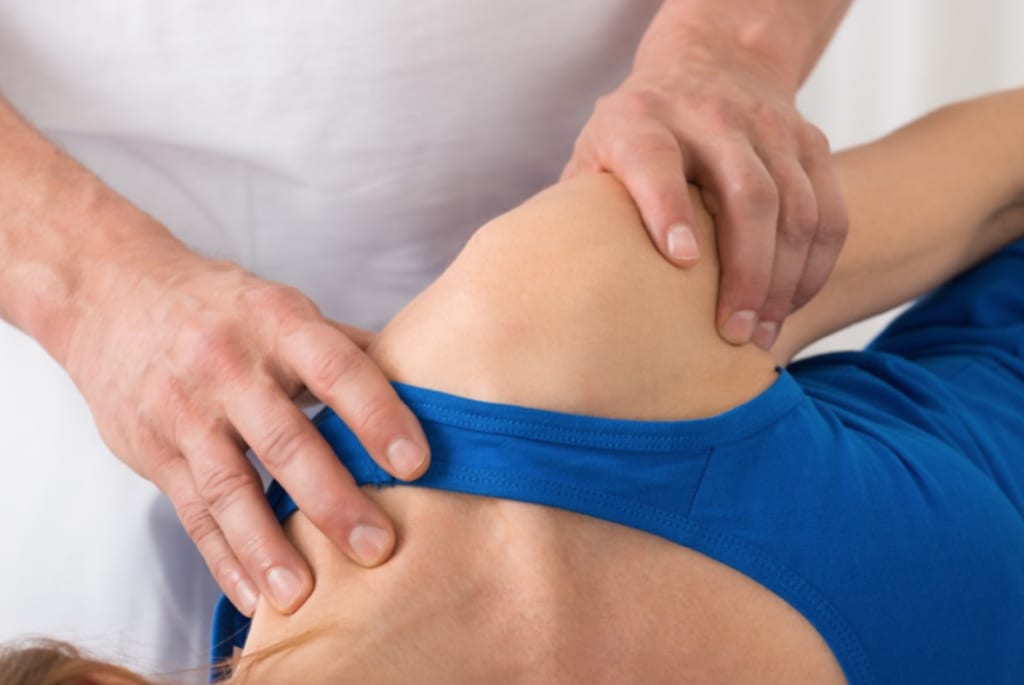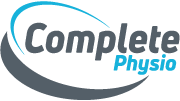What is acromioclavicular joint pain?
The acromioclavicular joint is located at the top of the shoulder. Acromioclavicular joint pain is often shortened to ACJ pain or sprain. It is when the joint between the clavicle (collar bone) and the acromion (part of the shoulder blade) becomes inflamed. This causes pain and is often tender to touch.

Acromioclavicular joint pain can interfere with a person’s normal daily activities. It can limit their ability to perform overhead sports such as tennis and exercises in the gym such as a shoulder or bench press. It is a common cause of shoulder pain and can affect people of all ages.
Why do people get acromioclavicular joint pain?
Acromioclavicular joint pain often occurs without a specific cause. Even when there has been no specific injury or trauma to the shoulder. It can develop as a result of ‘wear and tear’ changes in the joint or due to repetitive strain to the joint.
We also see many patients who have developed acromioclavicular joint pain after a fall onto the outside of the shoulder. This is common if you fall off your bike or take a tumble whilst skiing. These injuries are known as AC joint sprains/subluxations or dislocations and cause a separation between the bones (clavicle and acromium). Often the result is a swelling/bump on the top of the shoulder.

How do you diagnose acromioclavicular joint pain?
Acromioclavicular joint pain is a “clinical diagnosis” which means that your physiotherapist can diagnose it during your initial assessment. Diagnosis is normally quite simple. There are three key signs to the diagnosis:
- The patient points to the top of the shoulder to show the location of pain (not to the outside of the upper arm)
- The joint is tender when you or your physiotherapist touches it
- You get pain bringing your arm across your chest/neck (see below)

If you fall on your shoulder, then an X-ray is often carried out to assess the ‘grade’ of the AC joint injury (see below). A vast majority of these injuries are managed conservatively with physiotherapy and do not require surgery.

MRI’s and diagnostic ultrasound scans can be useful to confirm the diagnosis or for ruling out other reasons for your pain. Your physiotherapist can refer you for these if it is necessary.
What can you do to help acromioclavicular joint pain?
Treatment should begin with resting from the movements and activities that cause the pain. Painkillers and anti-inflammatory drugs can also be useful. If the pain does not settle in a few weeks then we would advise you get an assessment by one of our physiotherapists.
If the injury is recent (within the last week)and is still very painful we may suggest you wear a sling for a few days to allow the pain to settle down. We do not recommend that you use a sling for more than a week. This advise will be dependent on how severe the strain is. It is important that your shoulder does not stiffen up whilst the injury heals.
Once your physiotherapist has carried out a thorough assessment he will use a variety of hands-on techniques and exercises to reduce your pain and restore full movement and strength of your arm.
Our goal is to get back you back to full function as quickly as possible. This normally takes 4-6 weeks depending on the severity of the injury and how long you have been experiencing pain.
Physiotherapy may involve:
- Soft tissue release to the surrounding muscles
- Mobilisation techniques to improve the movement at the joint
- Taping to reduce the pressure on the joint
- Strength training and/or stretches to address any muscle imbalances
- Postural advice

If you have not specifically injured your shoulder, with a fall for example, and the pain just came on for no apparent reason then it is important we discover the root cause of your problem i.e. why are you placing too much strain on the joint? This could be due to weakness or tightness in certain muscles. Abnormal mechanics of your shoulder blade or a restriction in the surrounding joints such as the thoracic spine (the part of the spine between your shoulder blades).
If you get the pain whilst performing certain exercises in the gym, your physiotherapist will also assess your technique.

If the pain does not settle, then an ultrasound-guided steroid injection is an effective treatment for AC joint pain. Following an injection, we always recommend that you complete a course of physiotherapy. This helps to gain further improvements in pain, range of movement and shoulder strength.
Do’s and Don’t’s for acromioclavicular joint pain
Keep the shoulder moving as much as the pain allows
If you have had the pain for greater than 2 weeks and it is not improving despite rest, consult a physiotherapist
If the pain is not improving with physiotherapy or is getting worse then consider an ultrasound-guided injection
Do not completely stop using your shoulder – this can stop it getting better
If you are experiencing pain with activities above shoulder level then stop these activities for 2 weeks to see if the pain will reduce
Rub the area or get massage onto the area – it won’t help!
If you are experiencing any of these symptoms, have been diagnosed with an acromioclavicular and would like to see one of our expert physiotherapists you can call 0207 482 3875 or email info@complete-physio.co.uk. If you would like to speak to a specialist before booking, then please send us an email with your details and we will call you back.
Don’t let pain hold you back, book now!


